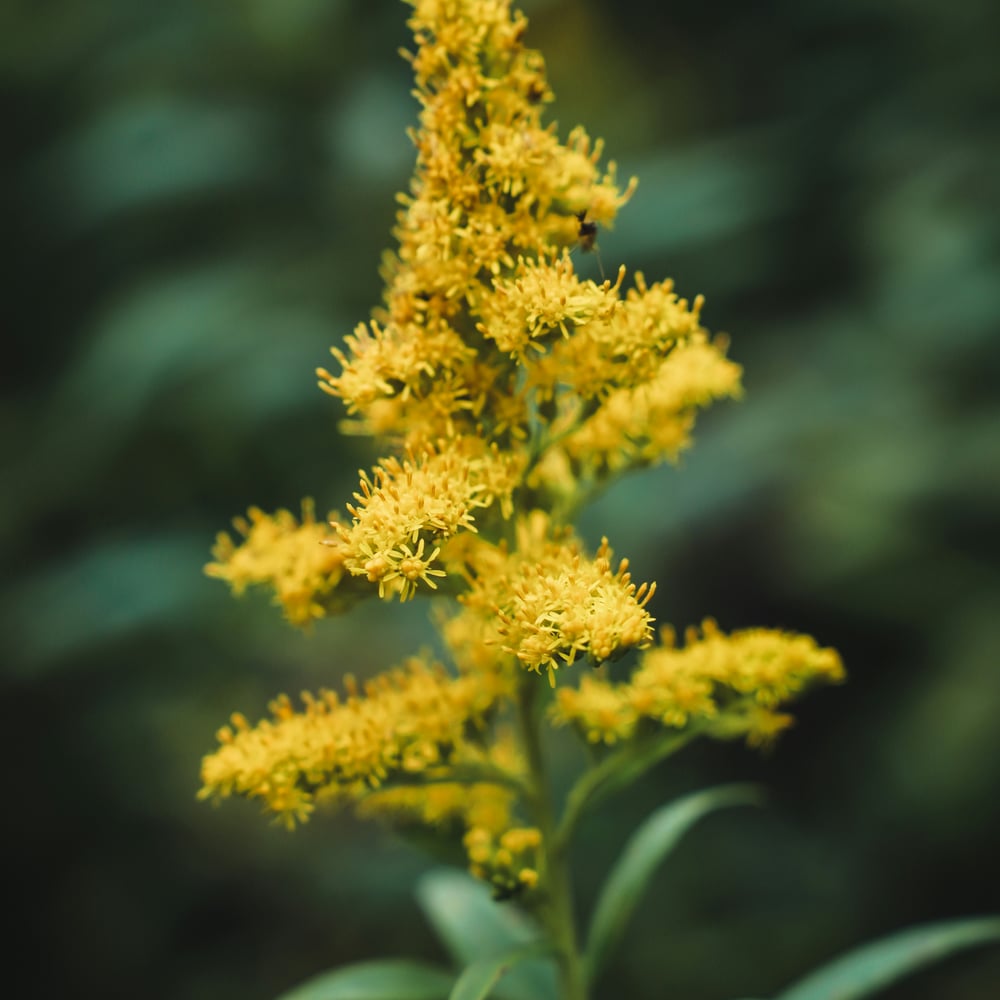Kentucky's State Flower: Goldenrod
 Kentucky's State Flower: Goldenrod
Kentucky's State Flower: Goldenrod
Meet Goldenrod
Kentucky's official state flower, the goldenrod captures the beauty and attitude of the Bluegrass State. This sturdy plant not only improves Kentucky's scenery but also speaks to its people profoundly with its brilliant yellow blossoms that explode in late summer and fall. Goldenrod, known for its flexibility and fortitude, captures Kentuckian indomitable nature.
History and Significance
The path of the goldenrod to become Kentucky's official flower is one of local pride. Declared the official flower in 1926, it supplanted the more delicate bluebell. The decision was not random; goldenrod, which represents Kentucky's rich natural legacy, thrives over the state's varied landscapes, from broad meadows to rolling hills. Its vivid hue reflects the friendliness of Kentucky's people by evoking sensations of warmth and hope.
Adoption of the goldenrod emphasizes its significance in regional culture. Often found in great quantity in the wild, the bloom graces roadsides and gardens all around the state. Its strong character reminds us of Kentucky's capacity for success in spite of obstacles, therefore reflecting the resiliency of its people and communities.
Biological Information
Known technically as Solidago gigantea, goldenrod is a member of the Asteraceae family. The clusters of brilliant yellow flowers that can reach heights of up to four feet help one to identify this perennial plant. Its lance-shaped leaves and extended stems help to define its unique look, which appeals both to gardeners and nature lovers.
Goldenrod flourishes in well-drained soil with plenty of sunlight. It is found in fields, along roadsides, and in gardens throughout Kentucky. To ensure its vibrant growth, it’s essential to provide adequate water, especially during dry spells, although it is quite drought-resistant once established.
 Blooming Period
Blooming Period
Usually spanning late summer to early fall, the blooming season of goldenrod is among the most beautiful times to see it. August and September are the busiest blooming seasons, when their vivid yellow blossoms accentuate Kentucky's rich vegetation in a striking contrast. The blossoms draw different pollinators, including butterflies and bees, therefore adding to the ecological variety of the state.
Meaning and Symbolism
Often connected with development, riches, and the beauty of nature, goldenrod has a great variety of symbolic connotations. It is very important in Kentucky's local celebrations and events, since it reminds us of the rich agricultural past of the state. Often included in floral arrangements, the flower not only reflects Kentucky's natural beauty but also the friendliness and hospitality of its people.
Beyond its beauty, goldenrod has long been cherished as a symbol of Kentucky's fortitude and will. Blooming across fields and gardens, it tells a tale about the energetic nature of the state and its legacy.
Goldenrod's Place in Kentucky
As the official state flower of Kentucky, the goldenrod is a symbol of the soul and energy of the Bluegrass State. Its cheerful blossoms not only enhance the scenery, but also serve as a symbol of Kentucky's storied history and culture. Every time I see a goldenrod, I am reminded of how welcoming, vibrant, and stunning the Bluegrass State is.
Get Your Flowers for Delivery in Kentucky
Kentucky's State Flower FAQ
Why is goldenrod the state flower of Kentucky?
The brilliant yellow goldenrod bloom, which was designated as Kentucky's official flower in 1926, was chosen due to its ease of growth and its apparent pleasure. It replaces the bluebell, which was selected to represent the tenacity and determination of the Kentucky people. The flower can grow in a lot of different places, just like the state's surroundings are different, so it's a good symbol of Kentucky's natural beauty and spirit.
When does goldenrod bloom, and how long does it last?
Goldenrod typically blooms from late summer through early autumn, with peak bloom occurring in August and September. Depending on the weather and climate where the flowers are growing, the flowering time can last for a few weeks. Each bloom brings in pollinators and is important to the ecosystem. They also add color to the scenery when most other flowers have stopped blooming.
What are some common uses for goldenrod in Kentucky?
Goldenrod is quite visually appealing and can draw helpful insects like bees and butterflies, which makes it popular in Kentucky gardens. Representing the agricultural legacy of the state, it also finds place in floral displays and local celebrations. Goldenrod also has medical qualities; some people use it in herbal medicines for different conditions, but first you should see a specialist before taking it for this intent.
How can I grow goldenrod in my garden?
Relatively easy is growing goldenrod in your garden. It is perfect for sunny areas since it likes fully sunlight and well-drained ground. Results will be best from spring or early fall plantings. While goldenrod is drought-tolerant once planted, ensure enough watering, particularly during dry spells. Regular pruning helps to preserve its form and encourage good development, thereby enabling you to enjoy its vivid blossoms year after year.
Are there different species of goldenrod?
There are actually more than a hundred kinds of goldenrod; the most often recognized state flower in Kentucky is Solidago gigantea. Different species may have different preferences for certain habitats, flower colors, and heights. Some are better suited for wild settings, while others work well in gardens. Gardeners may ensure they enjoy the benefits and beauty these great plants give by choosing the perfect type for their environment through precise variety research.











